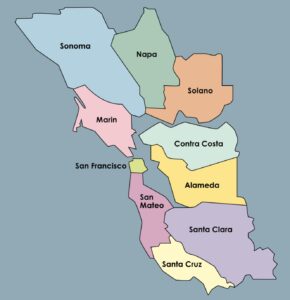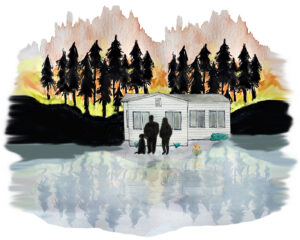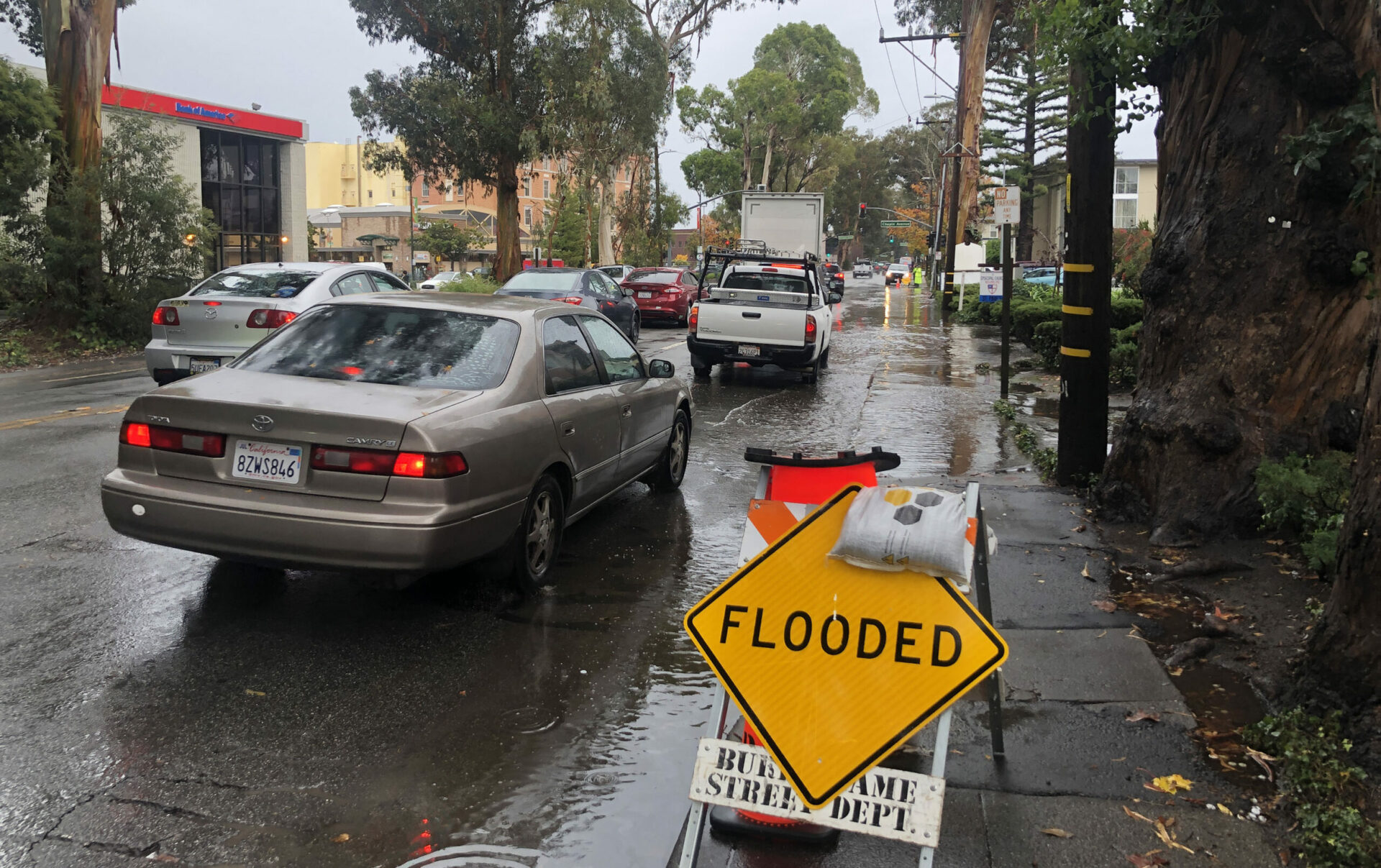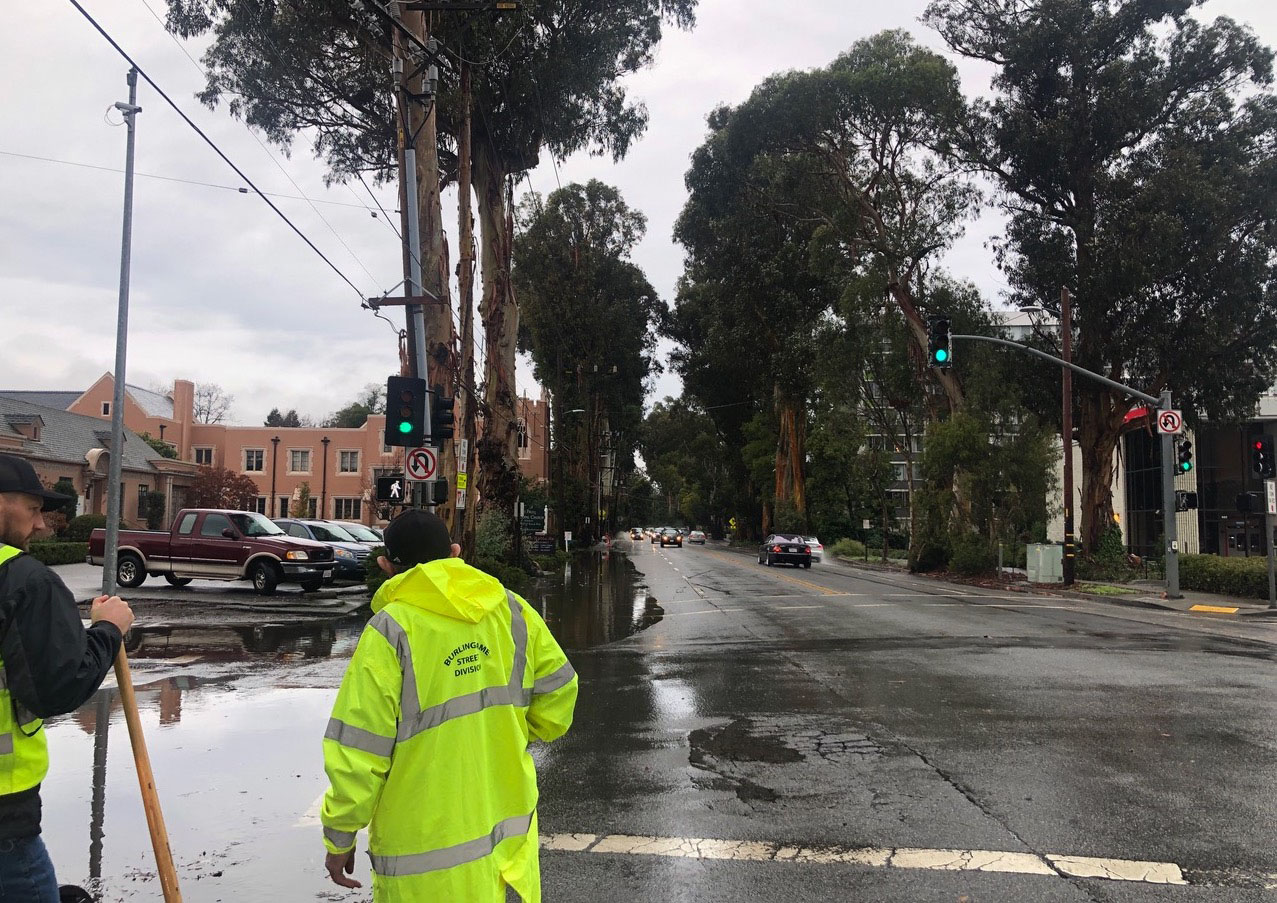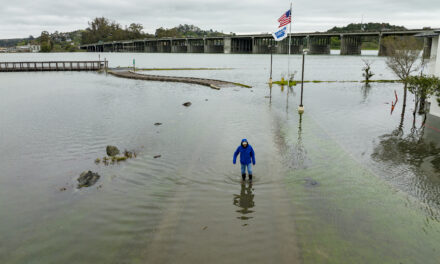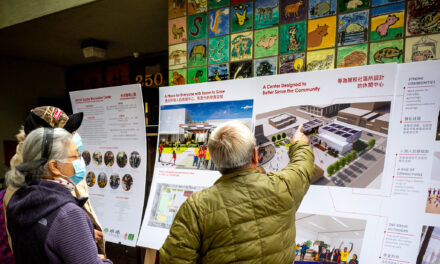A Fix for Old Drains, Old Trees with New Rainfall
Photo: Cariad Hayes Thronson
Navigating El Camino Real (State Route 92) through the city of Burlingame has been challenging — and sometimes nerve-wracking — for drivers and pedestrians alike for decades. The pavement is uneven and heavily cracked, and the massive eucalyptus trees that line the four-lane highway crowd the road, impeding sightlines and occasionally shedding branches, while their root systems buckle the narrow sidewalks. Flooding occurs during virtually every storm, thanks to an ancient drainage system and uneven pavement. Now, a CalTrans project to rehabilitate 3.6 miles of El Camino promises to remedy many of these issues, improving safety and climate resilience.
The El Camino Real Roadway Renewal Project will completely replace the pavement, including underground structures, between Millbrae and San Mateo, and upgrade sidewalks to comply with the Americans with Disabilities Act.
Although climate resilience was not a driver of the project, “the recent flooding due to atmospheric rivers re-emphasized the purpose and need for it,” according to CalTrans spokesperson Alejandro Lopez. CalTrans will install 34 new drainage inlets, modify or relocate an additional 25, and replace old drainage pipes.
The project will require the removal of up to half of the 700 trees, mostly eucalyptus and elms, within the project limits. Several eucalyptus and one elm toppled during the 2022-23 storms, and many of the trees are deemed too old or unhealthy to withstand construction-related disruption to their root systems; others need to be removed to improve sightlines or make way for sidewalk improvements.
Crews tackle flooding and debris in the project zone in Burlingame. Photo: Cariad Hayes Thronson
Approximately 250 of the trees that will be removed are part of the Howard Ralston Eucalyptus Tree Rows, which are listed in the National Register of Historic Places. According to Jennifer Pfaff of the Burlingame Historical Society, the trees will need to be replaced with different species with narrower trunks. They will also be vetted for their ability to withstand drought and atmospheric rivers. “We need to convey the period of time when the original trees were planted,” she says. “The goal is a safer roadway and sidewalk while retaining the history and character of the tree rows.”
Other Recent Posts
Slow Progress on Shade For California’s Hottest Desert Towns
Coachella Valley communities face record temperatures with little shade. Policy changes lag as local groups push for heat equity.
In Uncertain Times, the Port of Oakland Goes Electric
A $322M grant powers Oakland’s port electrification — cleaning air, cutting emissions, and investing in community justice.
Testing Adaptation Limits: Mariposa Trails, Marin Roads & San Francisco Greenspace
In KneeDeep’s new column, The Practice, we daylight how designers, engineers and planners are helping communities adapt to a changing climate.
ReaderBoard
Once a month we share reader announcements: jobs, events, reports, and more.
Boxes of Mud Could Tell a Hopeful Sediment Story
Scientists are testing whether dredged sediment placed in nearby shallows can help our wetlands keep pace with rising seas. Tiny tracers may reveal the answer.
“I Invite Everyone To Be a Scientist”
Plant tissue culture can help endangered species adapt to climate change. Amateur plant biologist Jasmine Neal’s community lab could make this tech more accessible.
How To Explain Extreme Weather Without the Fear Factor
Fear-based messaging about extreme weather can backfire. Here are some simple metaphors to explain climate change.
Live Near a Tiny Library? Join Our Citizen Marketing Campaign
KneeDeep asks readers to place paper zines in tiny street libraries to help us reach new folks.
Join KneeDeep Times for Lightning Talks with 8 Local Reporters at SF Climate Week
Lightning Talks with 8 Reporters for SF Climate Week
Staying Wise About Fire – 5 Years Post-CZU
As insurance companies pull out and wildfire seasons intensify, Santa Cruz County residents navigate the complexities of staying fire-ready.

